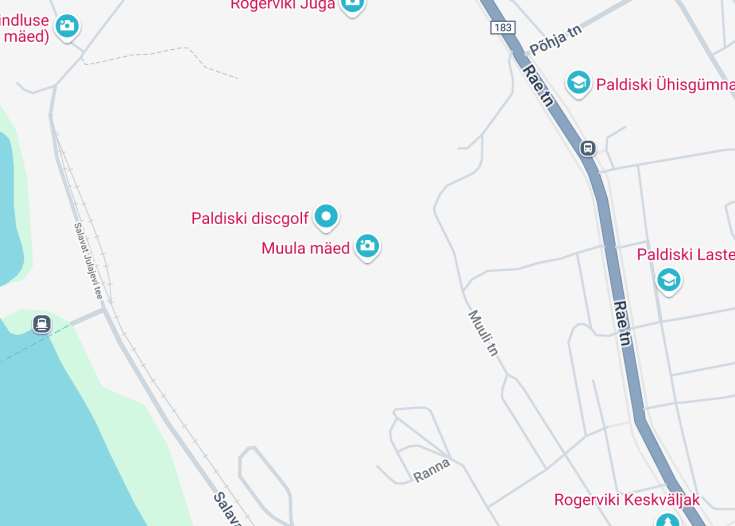Muula Mäed, also known as the Peter I Fortress, stands as a testament to Estonia’s rich military history. Located in the coastal town of Paldiski, this fortress was constructed in the early 18th century and played a significant role in the region’s strategic defense. Today, the site attracts visitors with its majestic cliffs, scenic coastal views, and intriguing remnants of its storied past.
For an enriching experience at Muula Mäed, consider visiting during the golden hour—just before sunset. The stunning play of light on the fortress and surrounding landscape creates a magical atmosphere, ideal for photography enthusiasts and romantic outings.
Plan your visit by bringing comfortable walking shoes, as exploring the trails around the Peter I Fortress involves some hiking. This ensures you can fully appreciate the breathtaking vistas overlooking the Baltic Sea and the historical context of the site.
Muula Mäed (Peter I Fortress): A Historical Gem in Estonia
The Muula Mäed, also known as Peter I Fortress, is a breathtaking historical landmark located in Paldiski, Estonia. This monumental structure, built in the early 18th century, was part of Russia’s efforts to establish naval power in the Baltic Sea. As a tourist, visiting the fortress allows you to delve into the rich history of the region while enjoying stunning views of the surrounding landscapes. The fortress was named after Tsar Peter the Great, a pivotal figure in Estonian history.
Today, Muula Mäed stands as a testament to military architecture, showcasing impressive stone walls and fortifications that have withstood the test of time. Tourists can explore its vast grounds, taking in the panoramic views of the Baltic waters and the nearby natural beauty. The site is not only interesting for history buffs but also serves as a picturesque backdrop for photography enthusiasts. The combination of history, architecture, and scenic beauty makes Muula Mäed a must-visit destination in Estonia.
Exploring the Attractions of Muula Mäed (Peter I Fortress)
At Muula Mäed, visitors can discover a variety of attractions that highlight its historical significance. One major feature is the fortress’s extensive network of bastions, offering visitors a chance to walk along the ancient pathways and admire the strategic view points once utilized for defense.
Guided Tours and Information
Guided tours are available, providing insights into the fortress’s construction and its role throughout history, making the experience informative and engaging. Information boards around the site further enhance understanding of the< strong> historical context of the structures.
Outdoor Activities
Moreover, the surrounding area invites visitors for leisurely walks and exploration, allowing tourists to immerse themselves in the breathtaking natural surroundings unique to Estonia. For families, there are picnic spots ideal for enjoying a lovely day outdoors.
A Unique Feature of Muula Mäed: The Sea Fortress Walls
A striking feature of Muula Mäed is its formidable sea fortress walls, which not only marked the boundaries of defense but also demonstrate impressive engineering of their time. These walls are built using techniques that were revolutionary during the 1700s, showcasing a blend of functionality and military strategy. Interestingly, remnants of original artillery placements can still be seen along the walls, painting a vivid picture of the fortress’s military past. The dual role of the fortress as both a protective stronghold and a naval base adds to its historical allure. This twin functionality makes the Muula Mäed an intriguing site for those fascinated by military history and architecture.
Explore the Fascinating Muula Mäed (Peter I Fortress) in Paldiski, Estonia
The Muula Mäed, known as the Peter I Fortress, is a captivating historical site that should be on every traveler’s itinerary. This remarkable fortress offers a deep dive into Estonia’s military history and architecture, making it perfect for history buffs, families, and adventurers alike. Visitors can expect to walk through the impressive remnants of 18th-century fortifications, all while soaking in breathtaking views of the surrounding landscape.
Walking through the fortress grounds, you’ll encounter stunning stone walls, unique bastions, and a fascinating mixture of nature reclaiming its space. A guided tour can reveal intriguing stories behind the fortress’s construction and its strategic importance during the Russian Empire. Photographers will be thrilled with the picturesque scenery, especially during the golden hour as the sun sets over the Baltic Sea.
The Muula Mäed can effortlessly fit into a broader tourist route. Combine your visit with trips to nearby natural parks or explore other historic sites, creating a fulfilling day trip from the hustle and bustle of city life. Don’t forget to check for special events like reenactments or historical demonstrations that enrich the experience further. As an insider tip, visiting during weekdays tends to be quieter, allowing for a more personal exploration.
For additional guidance, keep an eye out for the local fauna and flora on the outskirts of the fortress. The surrounding areas provide excellent opportunities for birdwatching and nature walks, complimenting your visit to this remarkable historical landmark.
When is the Best Time to Visit Muula Mäed (Peter I Fortress)?
The optimal time to visit the Muula Mäed is during late spring or early autumn. These seasons offer pleasant weather for exploring the extensive grounds and less crowded experiences, allowing visitors to soak in the rich atmosphere of the fortress.
Special Events to Consider
Every summer, the fortress hosts a Historical Reenactment Weekend, bringing history to life with actors portraying soldiers and civilians from the era. This event is a fantastic opportunity for families and history enthusiasts to engage with the past.
Accessibility and Limitations
The Muula Mäed (Peter I Fortress) is accessible for most visitors, but certain areas may pose challenges for those with limited mobility.
Accessibility
Limitations
- Some sections of the fortress may be closed for maintenance or restoration work.
- Pets are generally not allowed on the grounds.
- Food and drinks are not permitted inside the historic areas.
Notes to visitors
- It is advisable to wear comfortable shoes as the terrain can be uneven.
- Stay hydrated, especially during warmer months, as there are limited facilities nearby.
- Guided tours often run on weekends, so plan accordingly for a more informative experience.
General Information
Details for your visit to Muula Mäed (Peter I Fortress)
Location
The Muula Mäed fortress is conveniently located near several notable landmarks, making it easy to incorporate into your travel plans. Visitors often combine their trip with nearby parks and other historical sites.
Address:
Muuli tn 6-8, Paldiski, 76805 Harju maakond
Visiting Information
The fortress is open to the public year-round, allowing visitors to explore its grounds freely. Early mornings or late afternoons provide a tranquil atmosphere, perfect for a serene walk and photography opportunities.
How to Reach Muula Mäed (Peter I Fortress)
The easiest way to reach this historic site is via various methods of transportation:
Car
Muula Mäed is accessible by car, with nearby parking available for visitors. The drive offers scenic views of the Estonian countryside.
| Route | Distance | Travel Time |
|---|---|---|
| From Tallinn City Center | 43 miles (69 km) | 50 minutes |
| From Keila | 32 miles (52 km) | 40 minutes |
| From Rakvere | 62 miles (100 km) | 1 hour 10 minutes |
Bus
Buses frequently run from Tallinn to Paldiski, providing a cost-effective option for visitors. The bus station in Paldiski is a short walk to the fortress.
| Route | Distance | Travel Time |
|---|---|---|
| From Tallinn Bus Station | 43 miles (69 km) | 1 hour |
| From Parnu | 92 miles (148 km) | 1 hour 55 minutes |
| From Tartu | 113 miles (182 km) | 2 hour 15 minutes |
Nearby Attractions
- Paldiski Lighthouse – 1 mile (1.6 km)
- Pakri Seaside Park – 1.5 miles (2.4 km)
- Kapteni Rand Beach – 2 miles (3.2 km)
- Paldiski Railway Station – 2.5 miles (4 km)
- Kaali Crater – 15 miles (24 km)
- Tallinn Old Town – 27 miles (43 km)
- Viru Bog – 28 miles (45 km)
- Lahemaa National Park – 30 miles (48 km)
- Estonian Maritime Museum – 31 miles (50 km)
- Tallinn Botanic Garden – 33 miles (53 km)
- Rocca al Mare Open Air Museum – 34 miles (54 km)
- Marzipan Museum – 35 miles (56 km)
Common Questions
What is the history of Muula Mäed (Peter I Fortress)?
What are the main architectural features of the fortress?
- Thick Stone Walls: The fortress is known for its robust, thick stone walls designed to withstand artillery fire.
- Star-shaped Layout: Typical of military fortifications, it features a star-shaped design that maximizes defense capabilities.
- Gun Emplacements: Strategic locations for cannons and weaponry, allowing for effective defense against naval attacks.
- Bastions: The structure includes bastions that protrude from the walls, offering vantage points for surveillance and defense.
- Historic Ruins: Although much of the fortress is in ruins, the remaining sections give insights into early 18th-century military architecture.
Overall, these architectural features reflect the fortress’s intended purpose and its role in the defense history of Paldiski and the Baltic region.
What can visitors expect to see inside the fortress?
- Remaining Structures: While much of the fortress is in ruins, various structures, such as towers, walls, and foundations, can still be distinguished.
- Agriculture and Vegetation: Nature has reclaimed parts of the fortress area, providing a unique juxtaposition of history and nature with wildflowers and greenery.
- Interpretive Signage: Informational plaques and signs describe the history and architecture of the fortress, helping visitors understand its significance.
- Scenic Views: The fortress is located on elevated ground, offering stunning panoramic views of the surrounding coastline and the Baltic Sea.
- Photography Opportunities: The historical ruins combined with natural beauty provide excellent photo opportunities for history enthusiasts and photographers alike.
The experience at Muula Mäed is a blend of exploration, learning, and enjoying the natural landscapes that continue to shape the site today.
Is Muula Mäed (Peter I Fortress) associated with any legends or stories?
What is the significance of Muula Mäed (Peter I Fortress) in Estonian history?
Are there any nearby attractions worth visiting alongside Muula Mäed?
- Paldiski Harbor: A historic harbor area with picturesque views and an opportunity to learn about the maritime history of Paldiski.
- Pakri Lighthouse: Visit this iconic lighthouse for stunning views of the coastline and unique insights into maritime navigation history.
- The Old Soviet Naval Base: Explore the remnants of the Soviet naval base, a reminder of the Cold War era that shaped this region’s history.
- Kaibaga Manor: A beautiful historic manor nearby, showcasing Estonian architectural heritage.
- Paldiski Nature Reserve: Ideal for nature lovers, this reserve offers hiking trails and opportunities to observe the local flora and fauna.
These attractions provide a broader understanding of the area’s history while allowing visitors to appreciate the natural beauty of the region, making them excellent additions to a trip to Muula Mäed.
What environmental impact does Muula Mäed (Peter I Fortress) have on the surrounding area?
What types of events can be held at Muula Mäed (Peter I Fortress)?
- Historical Tours: Educational tours can be organized to enlighten participants about the fortress’s rich history, architecture, and cultural significance.
- Outdoor Events: With its stunning views and scenic surroundings, the fortress is a beautiful venue for picnics, photography events, or simply enjoying nature.
- Cultural Festivals: Local cultural festivals may feature performances, exhibitions, or demonstrations that celebrate Estonian heritage against the backdrop of the historic site.
- Art Exhibitions: The unique ambiance of the fortress makes it an interesting location for art exhibitions, particularly those focused on themes of history and nature.
- Commemoration Events: Various anniversaries or memorial services related to historical events can be held at the fortress, paying tribute to its significance.
The events hosted at Muula Mäed not only enrich community connections but also enhance awareness of the site’s intricate historical context.

Is Muula Mäed (Peter I Fortress) in Paldiski, Estonia Worth Visiting?
Muula Mäed, known as the Peter I Fortress, is a noteworthy destination for history enthusiasts and nature lovers alike. This historic fortress provides a unique glimpse into Estonia’s past, showcasing its military significance. Visitors can explore the rugged coastal cliffs and enjoy stunning views of the Baltic Sea, making it a perfect spot for photography and peaceful contemplation. The fortress’s architecture and the surrounding natural beauty create an immersive experience that captivates tourists. Additionally, its relatively off-the-beaten-path location ensures fewer crowds, allowing for a more personal exploration. While not as famous as other attractions in Estonia, the combination of history and nature makes Muula Mäed a worthwhile visit for those seeking something unique during their travels.










